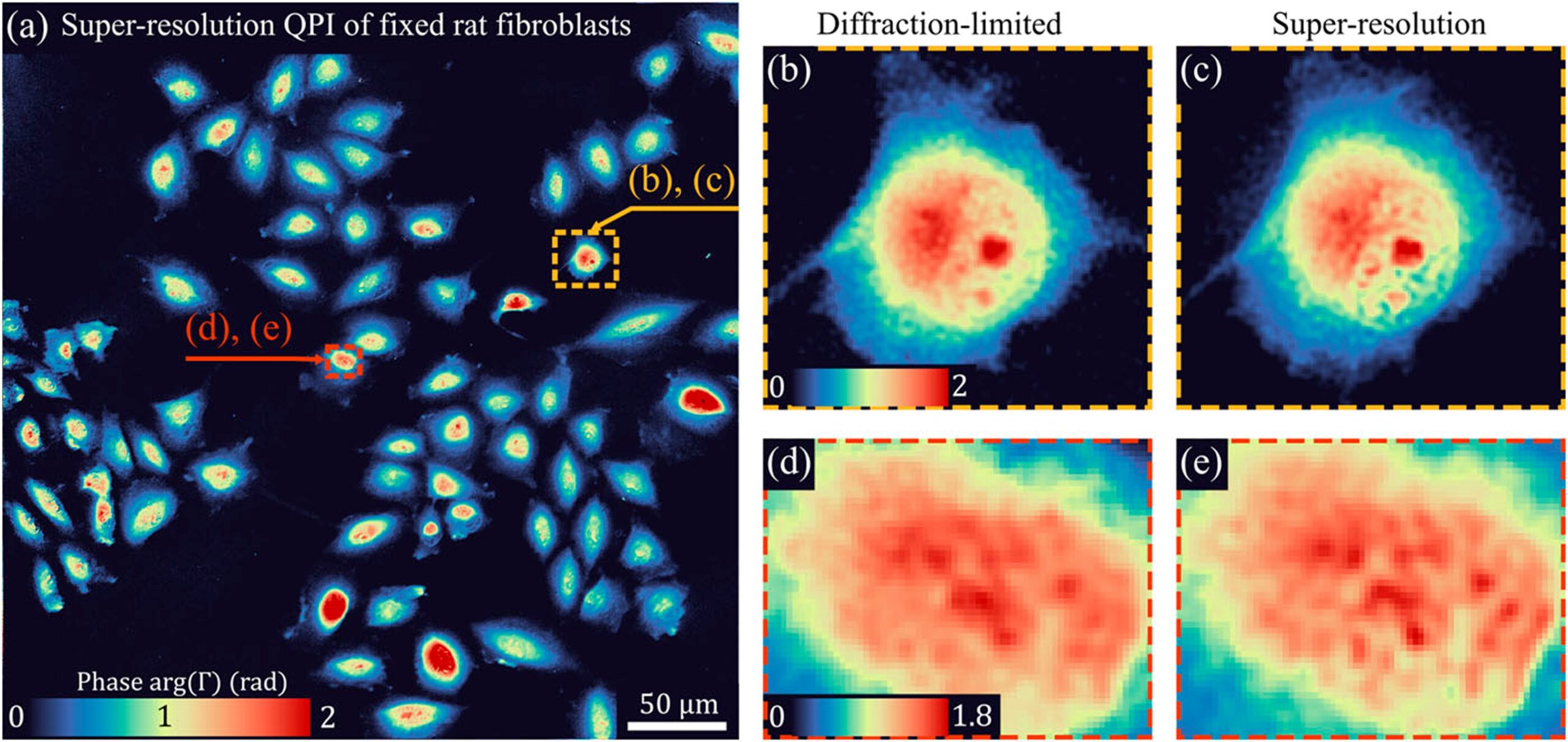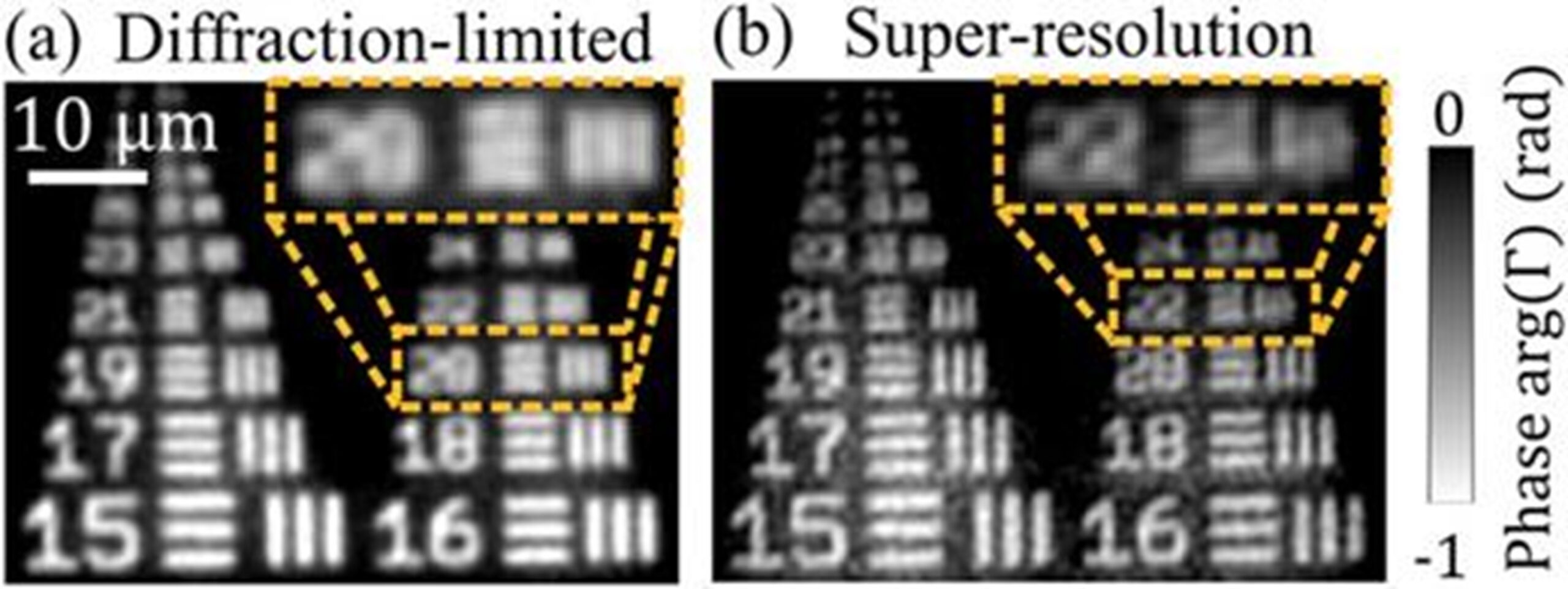Researchers have relied on quantitative phase imaging (QPI) to provide label-free and detailed images of biological specimens. However, achieving super-resolution in QPI has been a challenge. In this study, scientists have developed a method for real-time super-resolution QPI by manipulating the coherence gate in a holographic microscope with partially coherent illumination. By shaping the system’s point spread function (PSF), they created a PSF with a super-resolution central peak while minimizing sidelobe effects. This innovative approach resulted in widefield super-resolution QPI, enhancing the resolution of images by 19%. The method was successfully applied to imaging biological specimens, marking a significant advancement in the field.

Highlights:
- Innovative Imaging Technique: The paper introduces a method for label-free super-resolution quantitative phase imaging (QPI) in holographic microscopes. The approach uses partially coherent illumination properties to create coherence-gating, enhancing spatial resolution by introducing phase or amplitude modulation to generate sub-diffraction limited Coherence-Gating Functions (CGF).
- Experimental Demonstrations and Enhancements: Experimental setups demonstrate a nearly 20% improvement in resolving power, especially for cancer cell imaging. While using amplitude modulation for robustness, more advanced techniques like spatial light modulators are expected to exceed 20% improvement. The method offers the potential for further enhancements in spatial resolution.
- Impact on Biomedical Research: The technology offers real-time, high-resolution imaging with a large field of view, revolutionizing cancer research. Unprecedented insights into intracellular processes aid cancer studies and other biomedical applications. The generated high-quality datasets facilitate the development of AI-based automated analysis, advancing biomedical research significantly.
The original article was written by Miroslav Ďuriš, Petr Bouchal and Radim Chmelík 2023.
